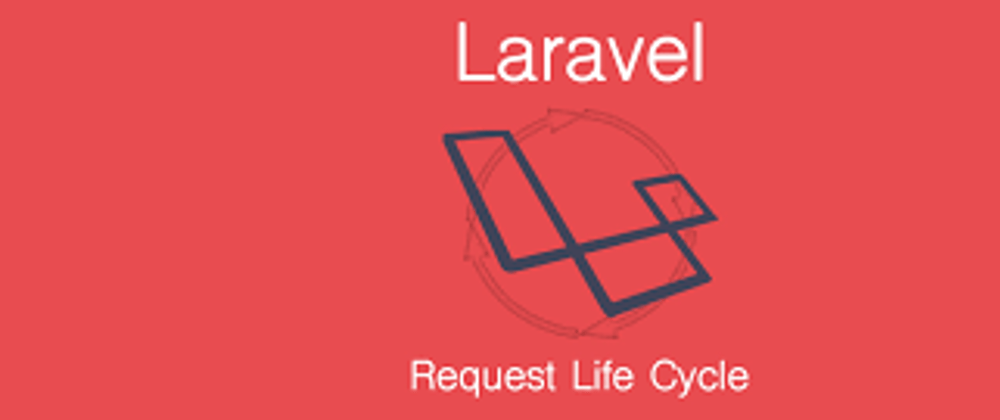Before delving deep into a framework its important to understand its inner workings. Here is an image that summarizes the Laravel lifecycle.
The entry point for all requests to a Laravel application is the public/index.php file. All requests are directed to this file by your web server (Apache / Nginx) configuration. The index.php file doesn't contain much code. Rather, it is a starting point for loading the rest of the framework.
<?php
use Illuminate\Contracts\Http\Kernel;
use Illuminate\Http\Request;
define('LARAVEL_START', microtime(true));
/*
|--------------------------------------------------------------------------
| Check If The Application Is Under Maintenance
|--------------------------------------------------------------------------
|
| If the application is in maintenance / demo mode via the "down" command
| we will load this file so that any pre-rendered content can be shown
| instead of starting the framework, which could cause an exception.
|
*/
if (file_exists(__DIR__.'/../storage/framework/maintenance.php')) {
require __DIR__.'/../storage/framework/maintenance.php';
}
/*
|--------------------------------------------------------------------------
| Register The Auto Loader
|--------------------------------------------------------------------------
|
| Composer provides a convenient, automatically generated class loader for
| this application. We just need to utilize it! We'll simply require it
| into the script here so we don't need to manually load our classes.
|
*/
require __DIR__.'/../vendor/autoload.php';
/*
|--------------------------------------------------------------------------
| Run The Application
|--------------------------------------------------------------------------
|
| Once we have the application, we can handle the incoming request using
| the application's HTTP kernel. Then, we will send the response back
| to this client's browser, allowing them to enjoy our application.
|
*/
$app = require_once __DIR__.'/../bootstrap/app.php';
$kernel = $app->make(Kernel::class);
$response = tap($kernel->handle(
$request = Request::capture()
))->send();
$kernel->terminate($request, $response);
The index.php file loads the Composer generated autoloader definition, and then retrieves an instance of the Laravel application from bootstrap/app.php. The first action taken by Laravel itself is to create an instance of the application / service container.
<?php
/*
|--------------------------------------------------------------------------
| Create The Application
|--------------------------------------------------------------------------
|
| The first thing we will do is create a new Laravel application instance
| which serves as the "glue" for all the components of Laravel, and is
| the IoC container for the system binding all of the various parts.
|
*/
$app = new Illuminate\Foundation\Application(
$_ENV['APP_BASE_PATH'] ?? dirname(__DIR__)
);
/*
|--------------------------------------------------------------------------
| Bind Important Interfaces
|--------------------------------------------------------------------------
|
| Next, we need to bind some important interfaces into the container so
| we will be able to resolve them when needed. The kernels serve the
| incoming requests to this application from both the web and CLI.
|
*/
$app->singleton(
Illuminate\Contracts\Http\Kernel::class,
App\Http\Kernel::class
);
$app->singleton(
Illuminate\Contracts\Console\Kernel::class,
App\Console\Kernel::class
);
$app->singleton(
Illuminate\Contracts\Debug\ExceptionHandler::class,
App\Exceptions\Handler::class
);
/*
|--------------------------------------------------------------------------
| Return The Application
|--------------------------------------------------------------------------
|
| This script returns the application instance. The instance is given to
| the calling script so we can separate the building of the instances
| from the actual running of the application and sendingresponses.
|
*/
return $app;
HTTP / Console Kernels
Next, the incoming request is sent to either the HTTP kernel or the console kernel, depending on the type of request that is entering the application. These two kernels serve as the central location that all requests flow through. For now, let's just focus on the HTTP kernel, which is located in app/Http/Kernel.php.
The HTTP kernel extends the Illuminate\Foundation\Http\Kernel class, which defines an array of bootstrappers that will be run before the request is executed. These bootstrappers configure error handling, configure logging, detect the application environment, and perform other tasks that need to be done before the request is actually handled. Typically, these classes handle internal Laravel configuration that you do not need to worry about.
The HTTP kernel also defines a list of HTTP middleware that all requests must pass through before being handled by the application. These middleware handle reading and writing the HTTP session, determining if the application is in maintenance mode, verifying the CSRF token, and more. We'll talk more about these soon.
The method signature for the HTTP kernel's handle method is quite simple: it receives a Request and returns a Response. Think of the kernel as being a big black box that represents your entire application. Feed it HTTP requests and it will return HTTP responses.
Service Providers
One of the most important kernel bootstrapping actions is loading the service providers for your application. All of the service providers for the application are configured in the config/app.php configuration file's providers array.
Laravel will iterate through this list of providers and instantiate each of them. After instantiating the providers, the register method will be called on all of the providers. Then, once all of the providers have been registered, the boot method will be called on each provider. This is so service providers may depend on every container binding being registered and available by the time their boot method is executed.
Service providers are responsible for bootstrapping all of the framework's various components, such as the database, queue, validation, and routing components. Essentially every major feature offered by Laravel is bootstrapped and configured by a service provider. Since they bootstrap and configure so many features offered by the framework, service providers are the most important aspect of the entire Laravel bootstrap process.
Routing
One of the most important service providers in your application is the App\Providers\RouteServiceProvider. Here is how it looks like:
Once the application has been bootstrapped and all service providers have been registered, the Request will be handed off to the router for dispatching. The router will dispatch the request to a route or controller, as well as run any route specific middleware.
Middleware provide a convenient mechanism for filtering or examining HTTP requests entering your application. For example, Laravel includes a middleware that verifies if the user of your application is authenticated. If the user is not authenticated, the middleware will redirect the user to the login screen. However, if the user is authenticated, the middleware will allow the request to proceed further into the application. Some middleware are assigned to all routes within the application, like those defined in the $middleware property of your HTTP kernel, while some are only assigned to specific routes or route groups.
<?php
namespace App\Providers;
use Illuminate\Cache\RateLimiting\Limit;
use Illuminate\Foundation\Support\Providers\RouteServiceProvider as ServiceProvider;
use Illuminate\Http\Request;
use Illuminate\Support\Facades\RateLimiter;
use Illuminate\Support\Facades\Route;
class RouteServiceProvider extends ServiceProvider
{
/**
* The path to the "home" route for your application.
*
* This is used by Laravel authentication to redirect users after login.
*
* @var string
*/
public const HOME = '/home';
/**
* The controller namespace for the application.
*
* When present, controller route declarations will automatically be prefixed with this namespace.
*
* @var string|null
*/
// protected $namespace = 'App\\Http\\Controllers';
/**
* Define your route model bindings, pattern filters, etc.
*
* @return void
*/
public function boot()
{
$this->configureRateLimiting();
$this->routes(function () {
Route::prefix('api')
->middleware('api')
->namespace($this->namespace)
->group(base_path('routes/api.php'));
Route::middleware('web')
->namespace($this->namespace)
->group(base_path('routes/web.php'));
});
}
/**
* Configure the rate limiters for the application.
*
* @return void
*/
protected function configureRateLimiting()
{
RateLimiter::for('api', function (Request $request) {
return Limit::perMinute(60)->by(optional($request->user())->id ?: $request->ip());
});
}
}
If the request passes through all of the matched route's assigned middleware, the route or controller method will be executed and the response returned by the route or controller method will be sent back through the route's chain of middleware.
Once the route or controller method returns a response, the response will travel back outward through the route's middleware, giving the application a chance to modify or examine the outgoing response.
Finally, once the response travels back through the middleware, the HTTP kernel's handle method returns the response object and the index.php file calls the send method on the returned response. The send method sends the response content to the user's web browser. We've finished our journey through the entire Laravel request lifecycle!
Focus On Service Providers
Service providers are truly the key to bootstrapping a Laravel application. The application instance is created, the service providers are registered, and the request is handed to the bootstrapped application. It's really that simple!
Having a firm grasp of how a Laravel application is built and bootstrapped via service providers is very valuable. Your application's default service providers are stored in the app/Providers directory.
By default, the AppServiceProvider is fairly empty. This provider is a great place to add your application's own bootstrapping and service container bindings. For large applications, you may wish to create several service providers, each with more granular bootstrapping for specific services used by your application.








Top comments (0)